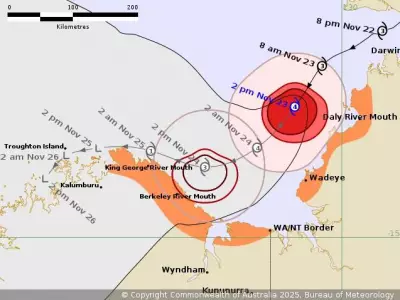
Just as the sound of cricket on the radio defines Australian summer, the persistent, echoing call of the Pacific Koel has become the unmistakable soundtrack to spring in Wollongong. For many residents, both days and nights are now filled with the monotonous cry of this distinctive bird.
The nocturnal nuisance disturbing sleep
Illawarra bird expert and author Terrill Nordstrom reveals he has witnessed frustrated locals throwing shoes into treetops in desperate attempts to silence the bird's relentless calls. The Pacific Koel, belonging to the cuckoo family, proves remarkably resilient to such disturbances.
Regardless of whether it's day or night, the male Koel continues his persistent calling as he works to establish his territory and attract potential mates. While the noise briefly subsides when a female responds and mating occurs, the respite proves short-lived. The female quickly departs, and the male – who typically partners with multiple females during breeding season – immediately resumes his loud calls.
Brood parasitism: Nature's cunning strategy
According to Mr Nordstrum, male Koels take no part in raising their young, though surprisingly, neither do the females. While the male's behaviour might seem antisocial, the female takes reproductive strategy to another level entirely.
She dedicates her energy to locating nests of other bird species to invade. Once she identifies a suitable nest, she typically removes one existing egg and replaces it with one of her own. This behaviour occurs across multiple nests, perfectly illustrating the saying "don't put all your eggs in one basket."
"They are what's known as 'brood parasites' in that they lay their eggs in another bird's nest," Mr Nordstrum explained. "The host species mother often doesn't realise what's happened as the eggs mimic the others. They are sometimes similar in appearance but not always."
Host species and eviction behaviour
In the Illawarra region, the most frequent host birds include the Red Wattlebird and the Noisy Friarbird, though records indicate up to 36 different species might find their nests invaded. Once the eggs hatch, the unsuspecting host mother raises the young Koel as her own.
Questionable behaviour appears to run in the Koel family, as the newly hatched chick promptly ejects the other eggs from the nest. This "evicting behaviour" ensures the larger cuckoo hatchling receives all the parental attention and food.
"They basically outcompete the rightful hatchlings for food," Mr Nordstrum confirmed.
Residents who feel the Koel's presence has increased in recent years are correct in their observations. Growing numbers of host species have created ideal conditions for Koels to thrive in suburban gardens.
"In the 1940s and 1950s you would rarely seen a Koel," Mr Nordstrum noted. "They migrate here for the Spring and Summer" and spend the remainder of the year in Northern Australia and Indonesia.
He explained that decades ago, farmers commonly shot Red Wattle Birds, then known as Gill Birds, by the thousands to make pies. Similar treatment was given to Rainbow Lorikeets, with historical recipes for 'Parrot Pie' still accessible online. As shooting practices declined, host species populations recovered, creating more opportunities for Koels.
The noisy male Koel is black in colour, while the female appears as a large, distinctly spotty bird who remains rarely seen due to her secretive nest-invading activities.
For those wondering when the nocturnal disturbances will end, Mr Nordstrum offers reassurance: "Once breeding season is over they'll go quiet." He reminds residents that despite the frustration, the Koel remains a protected species throughout Australia.





